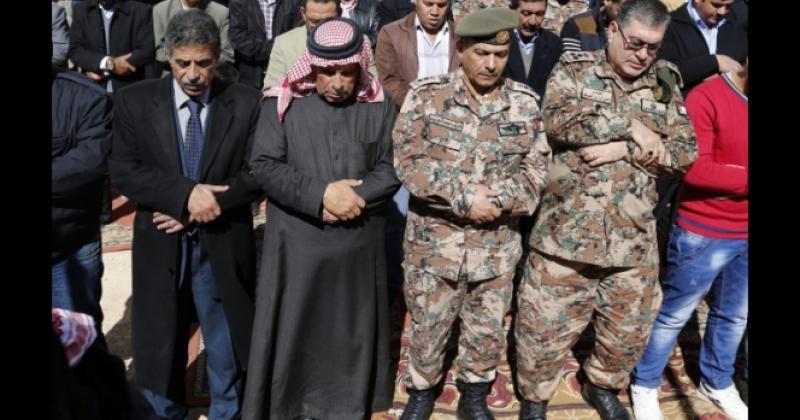The video of the Islamic State’s fiery execution of Muaz Kasasbeh last week was the nadir in the terrorist group’s death-cult self-promotion. Revulsion at the act, however, may well signal the decline of the terrorist group. It has proved a tipping point that finally galvanized Arab governments, cross-border tribes and a reluctant public into determined action to combat and defeat the group.
On every possible level, the strategy IS used with Jordan backfired. IS negotiated deceptively, attempting to trade the captured Jordanian pilot for a female would-be suicide bomber in Jordanian prison, even though they had killed the pilot a month before.
The IS tactic, according to BBC Amman correspondent Paul Adams, was “to string Jordan along and foster doubt among Jordanians over its role in the US-led coalition.” Its ultimate goal was to “smash the tribal bedrock upon which the Hashemite monarchy of King Abdullah rests,” reported the Financial Times.
The horror of Lt. Kasasbeh death by fire was compounded by the desecration of his remains. With his charred body inside, IS bulldozed the cage flat in which the pilot had been burned. They made it impossible to return the body to the family for a proper burial. This was par de cours for IS who leverage their power to shock and terrify their audiences with their butchery.
Reaction across the Middle East, particularly in Jordan, came with unprecedented vehemence. Countries normally at odds with each other, including Iran, Israel, Syria, Lebanon, Palestine, and all the Persian Gulf countries, were united in their disgust and anger. Jordan’s Al-Ra’y daily warned would-be IS supporters, “Anyone who pipes up even in a whisper of sympathy will pay a high price, as he will be our enemy."
The warning may not have been necessary, however, as IS miscalculated how their bloodthirsty tactics played on the Arab street. Speaking on NPR, former State Department coordinator for terrorism Daniel Benjamin said that this latest IS killing “will repel fence sitters [among Arabs at large],” while former longtime CIA operative and current Brookings Institute fellow Bruce Riedel observed that “IS could see a backlash like the one against Al Qaeda 10 years ago.”
Riedel was referring to the Sunni Awakening in Iraq. Beginning in 2005, the Sunni tribes turned against Al Qaeda after they became convinced that it was a greater threat to them than the U.S. forces occupying their country. IS’s rapid expansion in 2014 was largely due to a de facto alliance with the Iraqi Sunni tribes who were feeling completely marginalized and victimized by the Shiite government in power in Baghdad. For that reason, many observers believe that a similar realignment is very possible in Iraq and Syria today.
But for the Sunni tribes this is not a natural alliance. Speaking on NPR, a major Iraqi Sunni tribal leader said that if Sunni prisoners were released from Iraqi jails and they received more jobs and improved infrastructure “his men would start fighting against IS tomorrow.”
Minority support for IS amongst disaffected Arab youth is similarly brittle. In Time magazine, Jane Arraf wrote that “scratch the surface and it’s not a love of IS that has young men burning tires and attacking police stations — it’s a belief the government is ignoring its people.”
Addressing the larger issue of extremism in the Middle East will necessarily involve both a short- and long-term strategy. In the short term, this involves militarily excising the IS cancer by regaining the trust of the Sunni populations and tribes not only in Iraq but also in Syria where the Free Syrian Army fighting the Assad government is forced, as Washington Post’s Fareed Zakaria wrote, to “ally with the Islamic State out of fear rather than conviction.” Local Sunni fighters on the ground are critical to militarily defeating IS.
What will prevent the cancer from returning in the long term involves a multi-pronged and inter-generational strategy that removes the ability of extremist groups to portray themselves as the only alternative to corrupt and broken political systems across the Middle East.
As Fawaz Gerges, professor of international relations and Mideast politics at the London School of Economics, explains, IS is “a manifestation of the breakdown of state institutions, dismal socio-economic conditions and the spread of sectarian fires in the region.”
Key elements of this multi-pronged strategy include a mass and sustained drive to drown out the extremist voices claiming to represent Islam and building the infrastructure of an Arab civil society that provides Arab citizens, both men and women, with economic opportunity, equal democratic rights and the rule of law, based on citizenship and not sectarianism.
It is only by providing the missing ingredient of “hope” for future Arab generations, that it will be possible to drain the swamp of despair, helplessness and idleness which provides a fertile breeding ground for IS and future terrorist groups.
